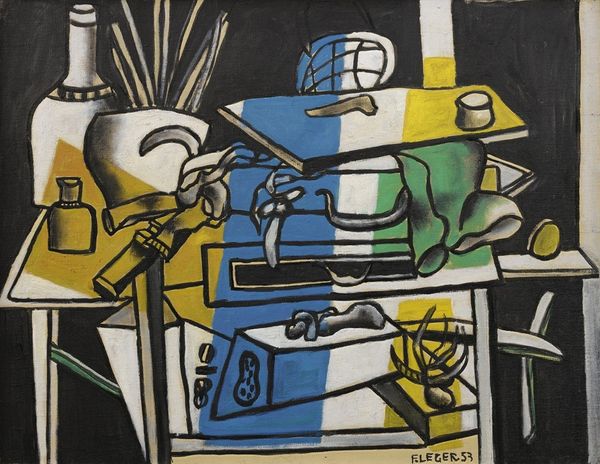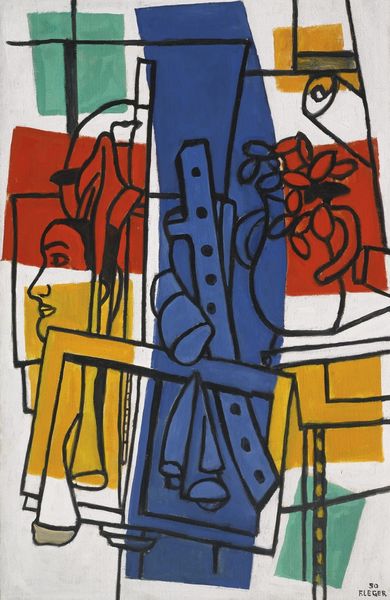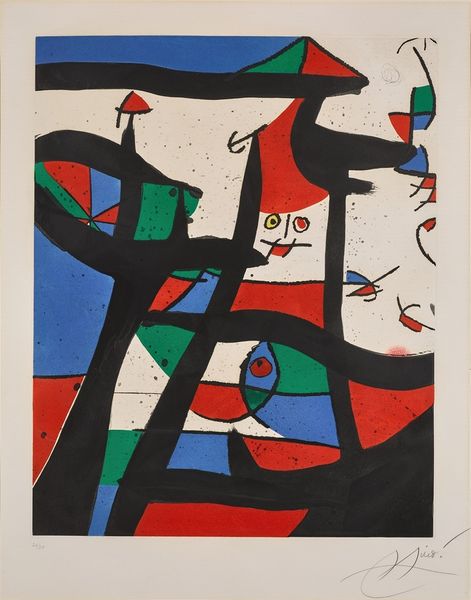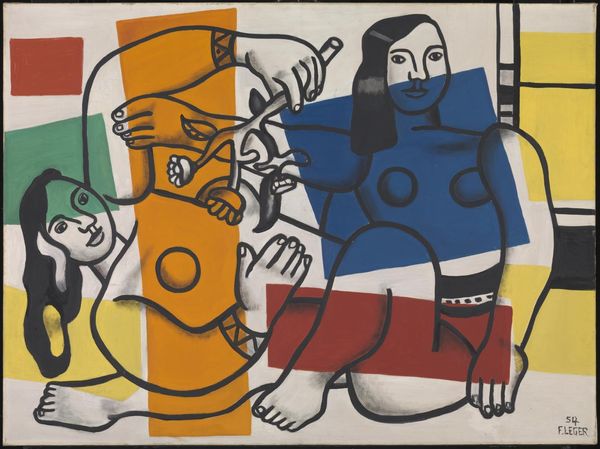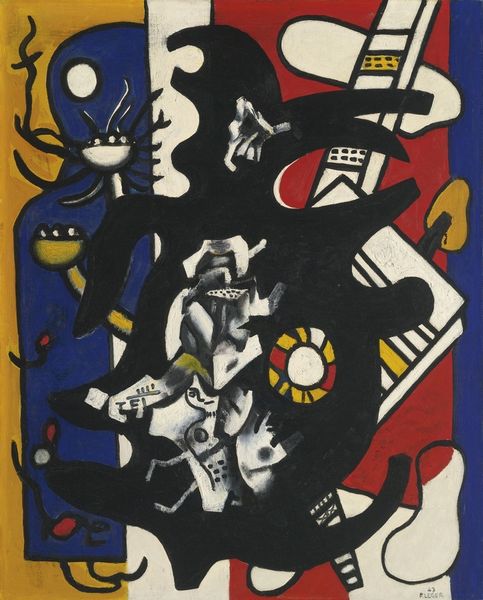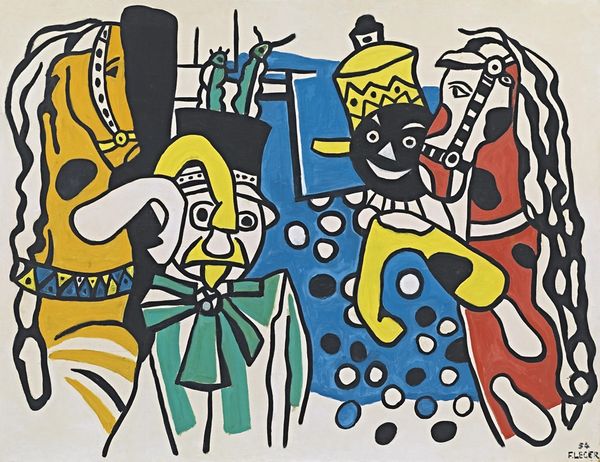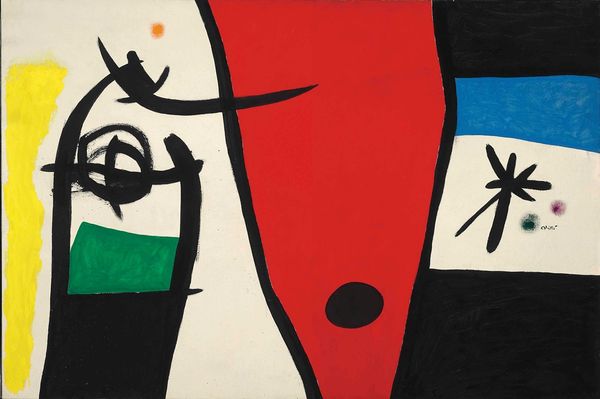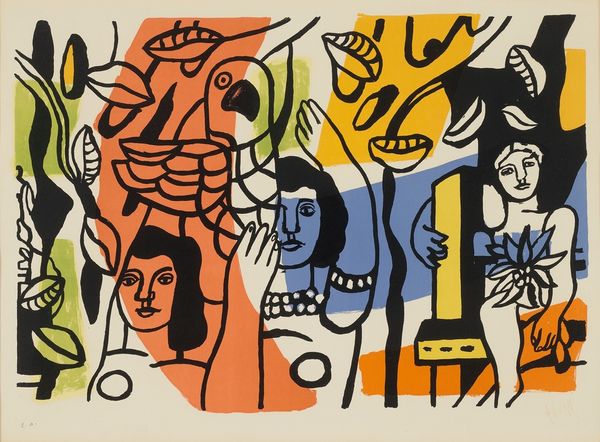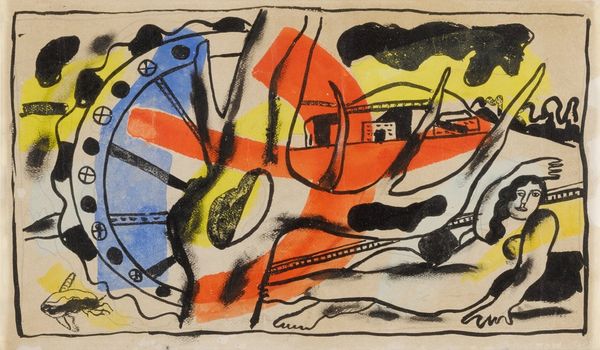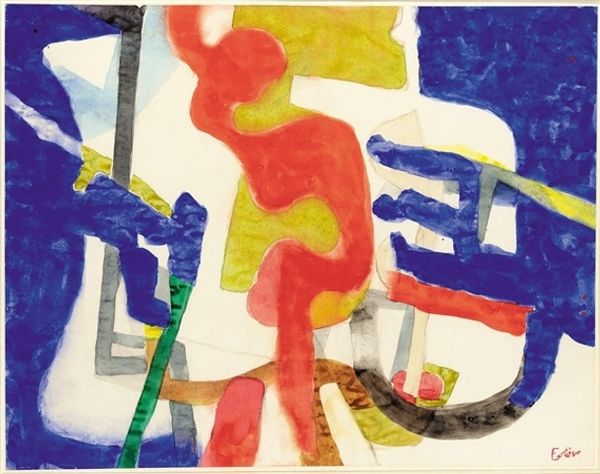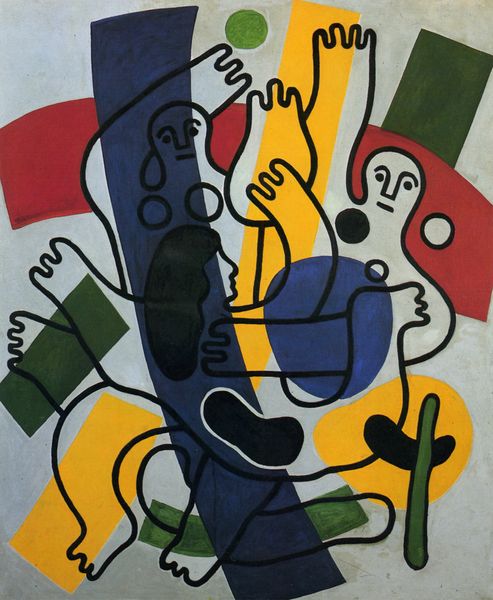
Copyright: Modern Artists: Artvee
Editor: Here we have Fernand Léger’s "Les deux clowns" from 1953, made with oil and acrylic paint. The stark colors and bold outlines create a somewhat playful, but also impersonal atmosphere. What stands out to you in this painting? Curator: Immediately, I'm drawn to the industrial aesthetic. Léger embraces materials beyond traditional art supplies – he uses acrylic paint here, signaling a departure. The application isn't trying to hide the materiality, is it? Think about the socioeconomic implications; new industrial paints becoming accessible suggests a democratization of art production. Editor: Democratization? Could you expand on that idea? Curator: Sure. Before synthetic pigments, vibrant colors were expensive, a privilege of the wealthy. Acrylics allowed for bolder experimentation at a lower cost. Plus, look at how Léger simplifies the forms, reduces the figures to almost mechanical components. Is this celebrating the machine age and the working class? Are the clowns now "everymen?" Editor: I never considered that. I was stuck on the circus as entertainment, ignoring the means and class issues inherent in the circus workforce. The materials are almost shouting it out! Curator: Precisely. It is impossible to consider the 'what' without delving into the 'how', and the 'why'. We should reflect on the social and economic conditions of the work’s creation to gain a deeper understanding of Léger's commentary. Editor: This completely shifts my perspective. The accessibility of the materials and their bold use opens up so many more possible avenues of understanding for this image! Curator: Indeed, viewing through a materialist lens adds valuable insights into what might otherwise be considered just a playful circus scene.
Comments
No comments
Be the first to comment and join the conversation on the ultimate creative platform.
